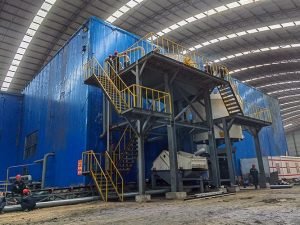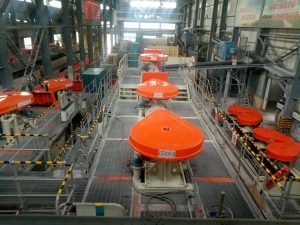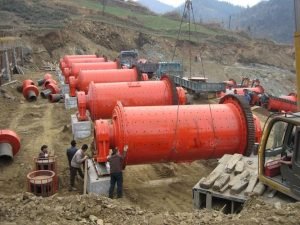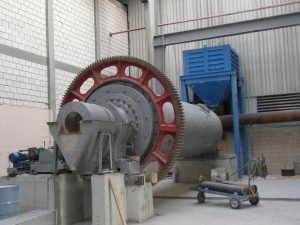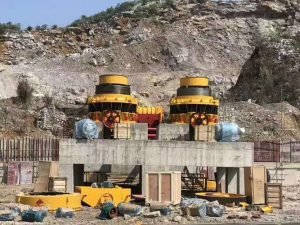Hematite Separation Plant
This is a complete 100tph hematite processing plant. The main equipment includes vibrating feeder, jaw crusher, cone crusher, vibrating screen, ball mill, spiral classifier, spiral chute, vibrating table, magnetic separator, etc.
1. Feeding and crushing system
Using a vibrating feeder to feed raw materials (below 500mm) stably and evenly into the primary jaw crusher. The primary jaw crusher is used to primary crush large rocks below about 150mm, and then the output of the primary jaw crusher will enter the first cone crusher for secondary crushing.
The output of the first cone crusher is about 40mm or less, which enters two sets of vibrating screens (15mm and 40mm two-layer screens, the 40mm screen plays a protective role), and 0-15mm fine materials are screened out and stored on the ground. It enters the second fine cone crusher and is crushed again. The output of the second fine cone crusher will also be sent to the vibrating screen, and the 0-15mm screened out material will be sent to the fine ore bin by the Belt Conveyor.
2. Grinding system
Powdered materials of 0-15mm enter the fine ore bin in front of the ball mill. A small vibrating feeder is installed below the transfer bin; powdery materials are smoothly transported to the ball mill through a belt conveyor. The function of the ball mill and spiral classifier is to grind the materials into fine powder to release as much Fe3O4 as possible from the hematite ore to obtain a 100-mesh to 200-mesh slurry.
3. Gravity separation system
The slurry is first sent into the tank, and then pumped into the spiral chute to concentrate the hematite. The hematite focus in the spiral chute is then pumped into shaking tables to be refined again.
4. Magnetic separation system
The hematite concentrate from the gravity separation system will be sent to the magnetic separator for re-refining to ensure a higher grade of hematite
5. Tailings system
Tailings from the gravity separator system and magnetic separator system will be pumped into settling tanks.
People who viewed this also viewed
Rutile Separation Process
 Zoneding Mining Machine
Zoneding Mining Machine


